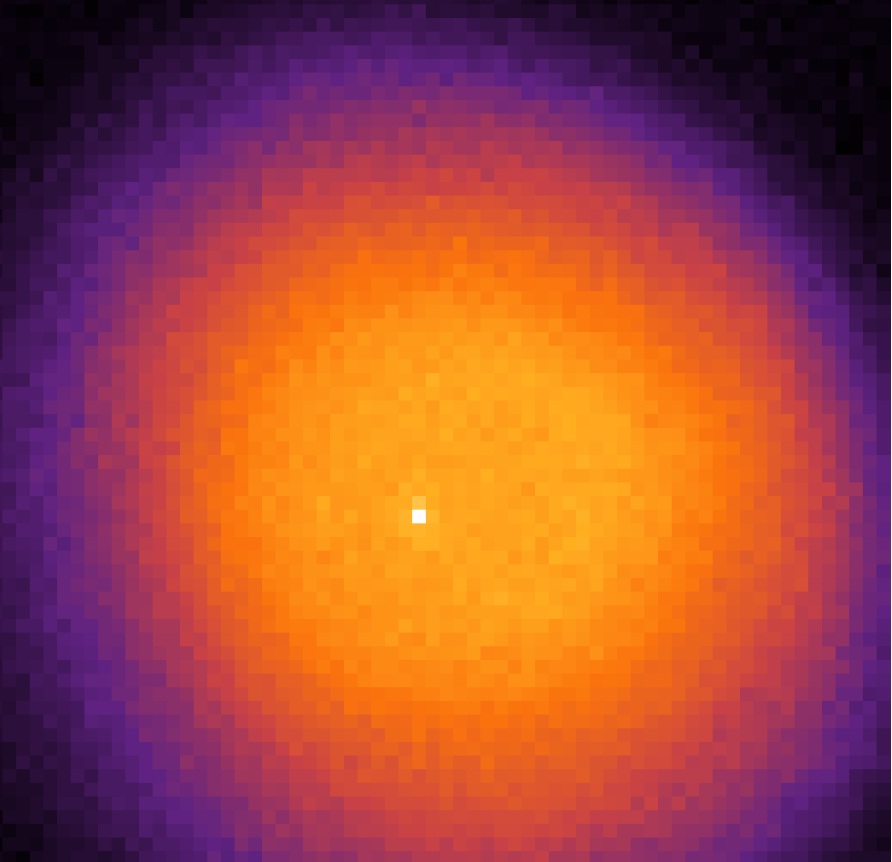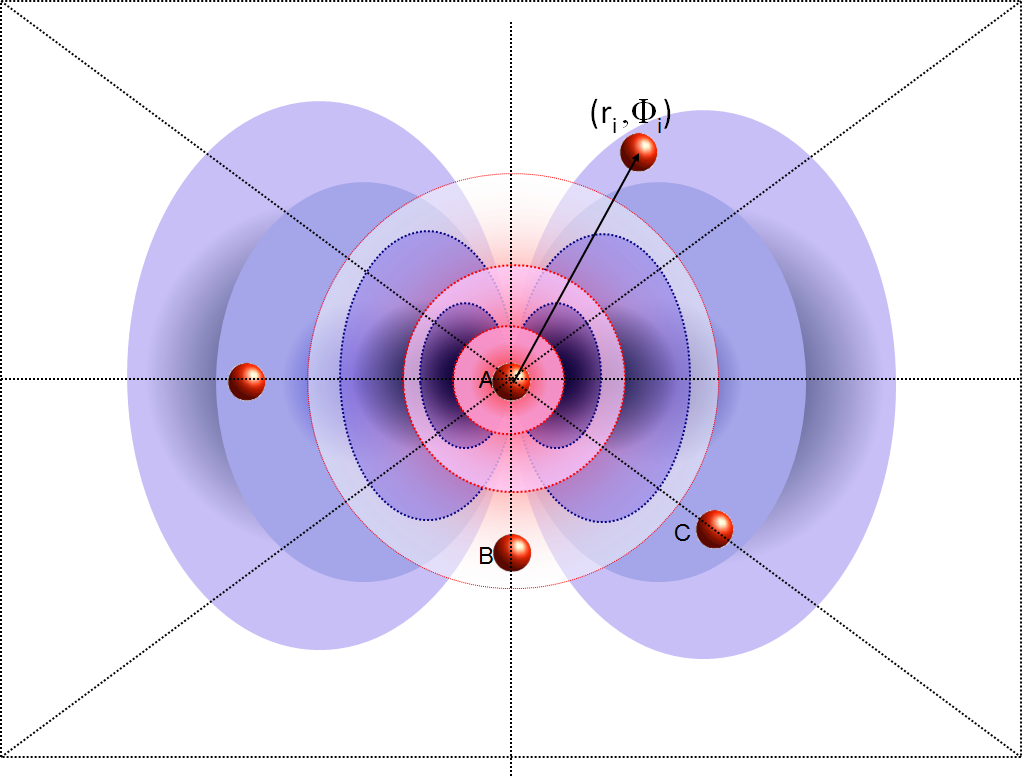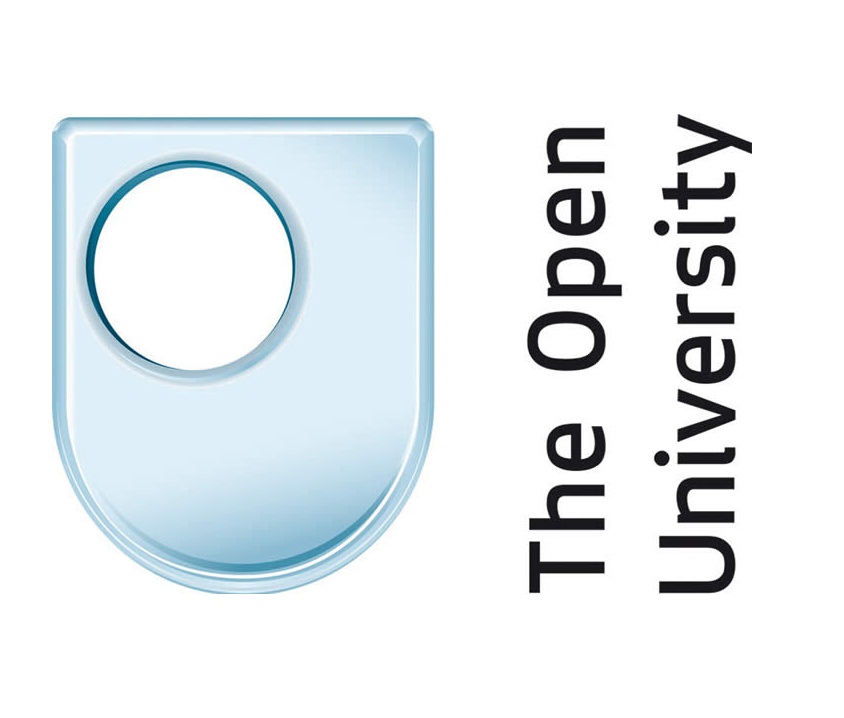Research
Testing the computational power of discord
At present, no single feature of the quantum world has been identified as the source of the computational enhancement, efficiency and speed-up of quantum technology. Whilst entanglement is widely recognised as a key resource in quantum technology, an exponential advantage over classical technology can be achieved without it in the presence of non-classical correlations. Furthermore for specific tasks separable states with discord have been proved to be even more efficient than entanglement.

Fluorescence image of the microscopic dipole trap.
The dynamics of entanglement and discord differ considerably, with entanglement being extremely fragile towards decoherence (even undergoing entanglement "sudden death" ) and discord being much more robust. Since decoherence is a major hurdle to the development of quantum technologies, the investigation of discord is a promising route for progressing the field.
Whilst discord has been proved to be a valuable resource for speed up of specific computational tasks and for being robust towards decoherence, the more general demonstration that discord can provide computational enhancement for any computational task has not been provided.This makes discord a very controversial asset for quantum information processing, although it is widely recognised that if one day it could be made of use for quantum computation, the impact would be truly ground-breaking.

Part of the apparatus, showing the vacuum chamber with optics inside. On the right part of the optical imaging for the microscopic dipole trap.
The goal of this project is to experimentally investigate the physics and the computational power of quantum discord in many-atom ensembles for a specific algorithm that performs the normalized trace estimation. We will be using the DQC1 model to compute sums over extremely large strings of numbers, which make the computation classically intractable. As an illustrative example, consider one hundred atoms trapped in an optical dipole trap. A unitary operation on these atoms would be described by a 2^100-by-2^100 matrix. Finding the normalised trace of this matrix is equivalent to adding up 10^30 numbers, which is a task that is classically intractable: modern supercomputers can perform 10^12 operations per second and therefore it would take about the age of the universe to have the same task. This is potentially transformative because quantum discord has not yet been studied in systems with large Hilbert spaces, and the successful demonstration of the exponential speed-up of the computational capability w ould be a major leap forward in the field. The ultimate impact of this research idea would be to gain a variety of experimental insights into, and thus a deeper understanding of, the quantum correlations that would be present in all quantum systems.
Multiparticle entanglement and graph states with cold Rydberg atoms
We use long-range interactions of atoms excited to Rydberg states for the generation of multi-particle entanglement and the preparation of "cluster states". Using arrays of dipole traps the geometrical arrangement of atoms can be made completely arbitrary and symmetries in the spatial distribution can be broken. We will investigate the possibility of mapping the geometrical arrangement of the atoms directly onto the topology of the cluster state, which could allow for arbitrary state preparation by global addressing of the ensemble of atoms. Fundamental issues in our understanding of the quantum phenomena lying at the heart of multiparticle entanglement and measurement-based quantum computing will be addressed.

Qualitative representation of contour maps for isotropic and non isotropic interactions between Rydberg atoms
The pursuit of schemes for quantum computation (QC) and their experimental implementation are important both for practical applications, which could lead to a revolution in information technology, and for a deeper understanding of the nature and behaviour of complex quantum systems. Recent years have seen significant progress in quantum information, thanks to the development of novel methods for controlling the state of quantum objects. However, there are fundamental challenges that hinder the successful implementation of prototypes, amongst these decoherence and scalability issues. Conventional quantum computation has matured following processing schemes analogous to the classical counterpart. A quantum register is an ensemble of quantum bits (qubits) a two-level quantum system, which can be found in the states |0> and |1>, or in their superpositions. The quantum algorithm is implemented using a sequence of single-qubit and two-qubit logical gates. Following the processing stage, the quantum state of the register must be measured (readout). The experimental implementation of a prototype quantum computer, consisting of a large number of qubits and capable of performing complicated calculations, is extremely challenging. Recently, so called one-way quantum protocols have been proposed, which promise more resilience to quantum decoherence and therefore should relax the requirements for experimental implementation. In one-way QC, all of the register's qubits are entangled with each other, forming a particular multi-particle entangled state called cluster state. A particular cluster state is designed to perform a specific operation through an algorithm that consists only of single-qubit measurements.

Images of the apparatus
We propose to use atoms in highly excited states, known as Rydberg atoms, to implement designer cluster states and demonstrate simple algorithms. Atoms will be confined in space by laser light, acting like arrays of microscopic tweezers with arbitrary spatial arrangement. The excitation of atoms to high Rydberg states switches on strong interactions between different tweezers, which are used for entangling all nearest-neighbours. Ultimately a variety of multiparticle entangled states can be obtained, by varying the spatial geometry of the tweezers, their distance and the interaction strength. Our goal is to demonstrate multiparticle entanglement using arrays of microscopic tweezers mediated by Rydberg-Rydberg interaction and a proof of principle one-way quantum algorithm.
© 2014 Katarzyna Krzyzanowska

